Abstract
Twenty-six infants, 3 to 23 months old, were trained on fixed-interval schedules ranging from 10 s to 80 s. The operant response was touching an illuminated location on a touch-sensitive screen, and 20 s of cartoon presentation was the reinforcer. The subjects were also trained in a six-phase self-control procedure in which the critical phases involved choice between 20 s of cartoon available after a 0.5-s delay (impulsive choice) and 40 s of cartoon delayed for 40 s (self-controlled choice). All the youngest children (3 to 5 months) showed long postreinforcement pauses on the fixed-interval schedule, with most intervals involving the emission of a single, reinforced, response, and all made self-controlled choices. Older subjects (9 to 23 months) either produced the same pattern as the younger ones on the fixed-interval schedule (classified as pause-sensitive subjects) or produced short pauses and higher steady response rates (classified as pause-insensitive subjects). All pause-sensitive subjects made self-controlled choices in the self-control condition, and all pause-insensitive subjects made impulsive ones.
Full text
PDF

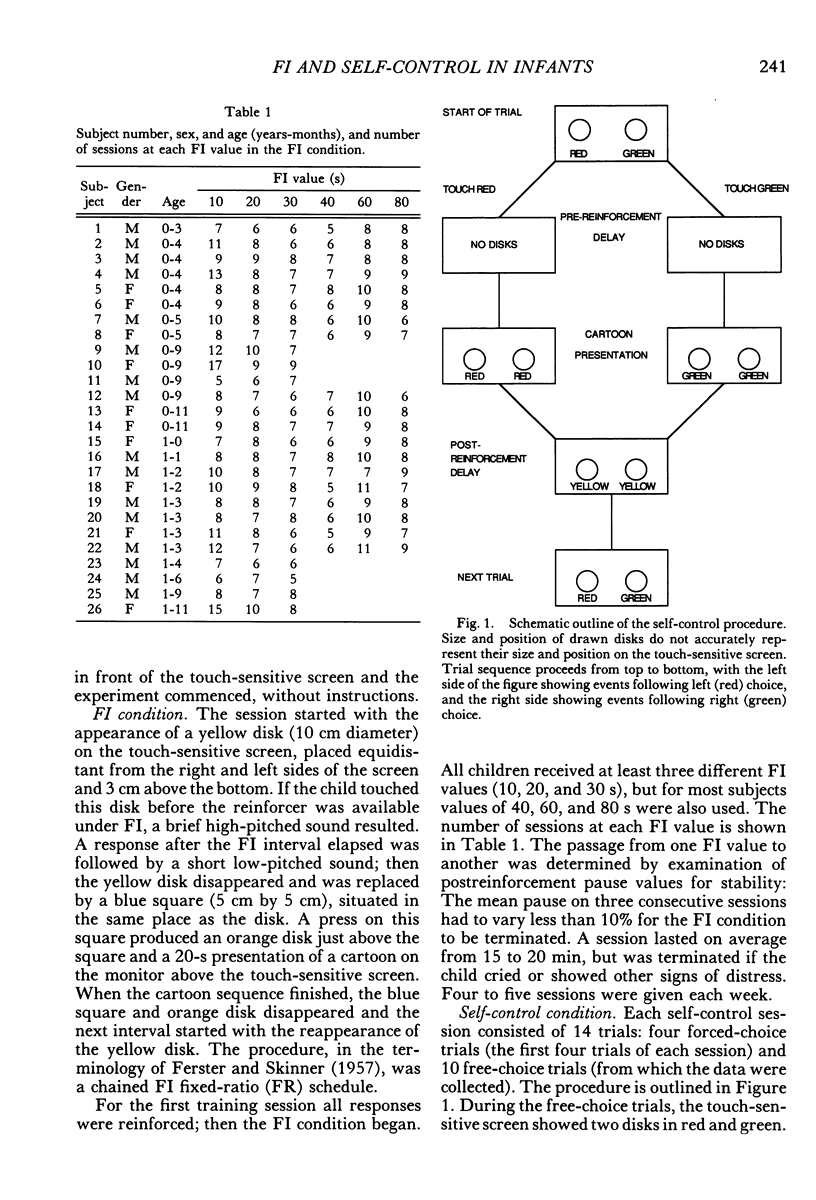
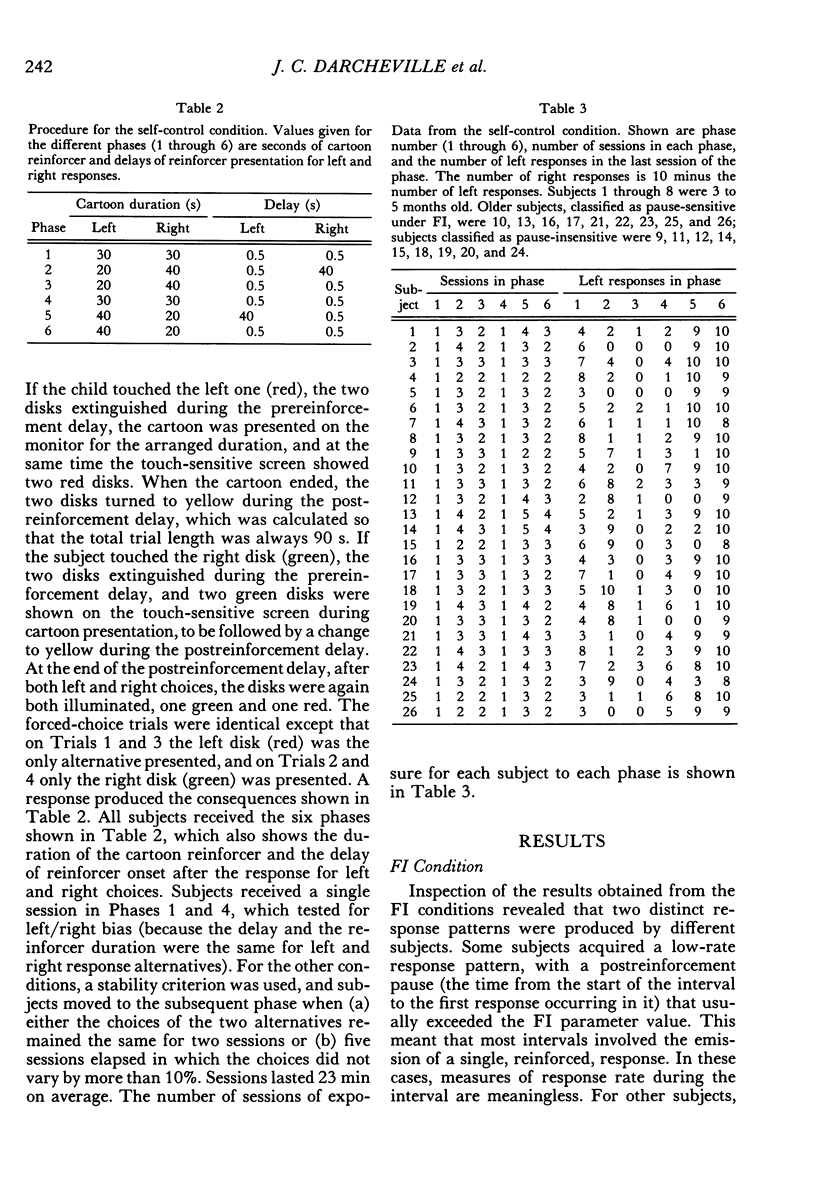

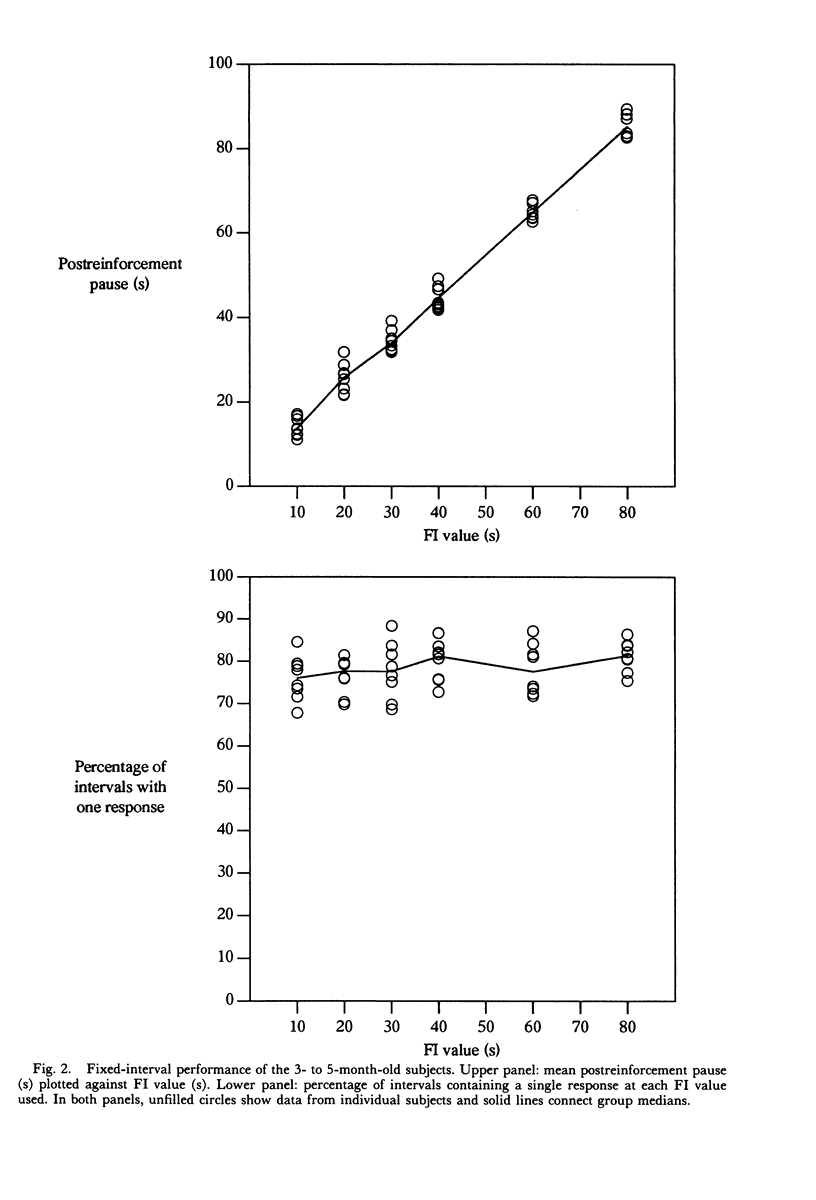
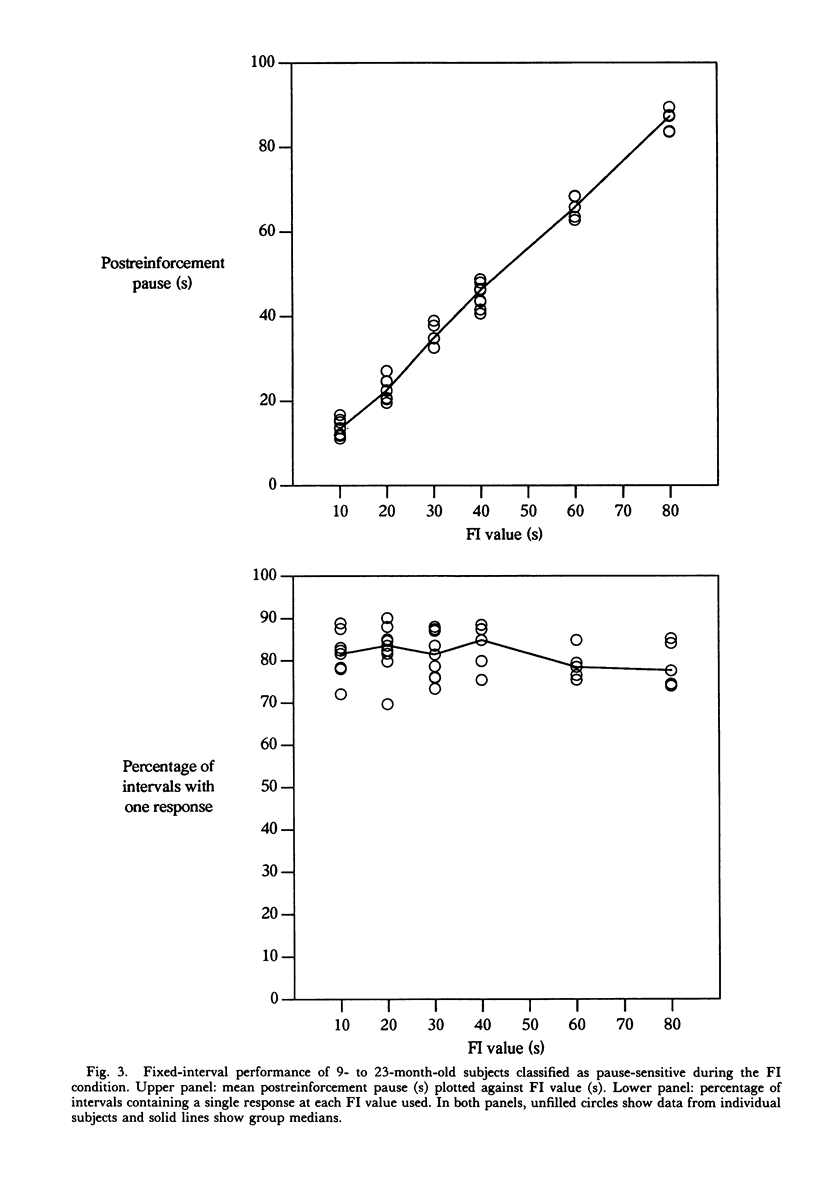
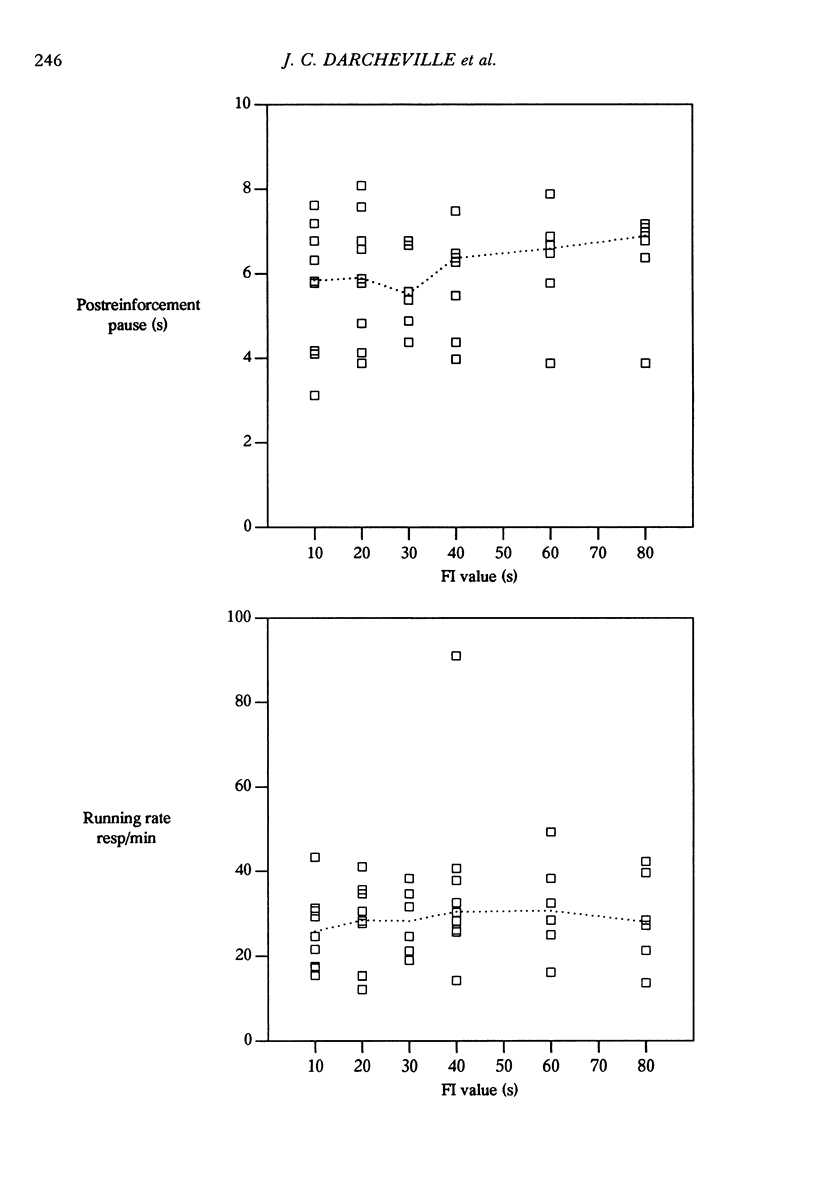
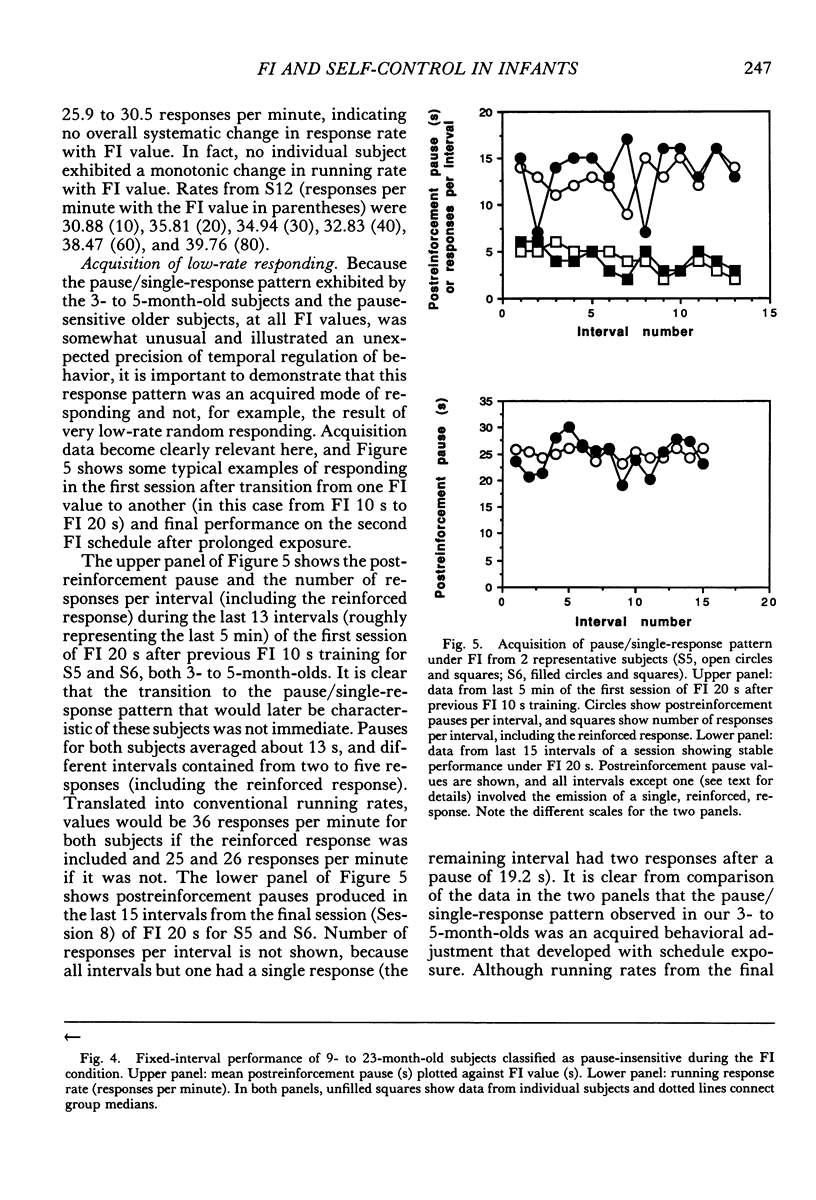
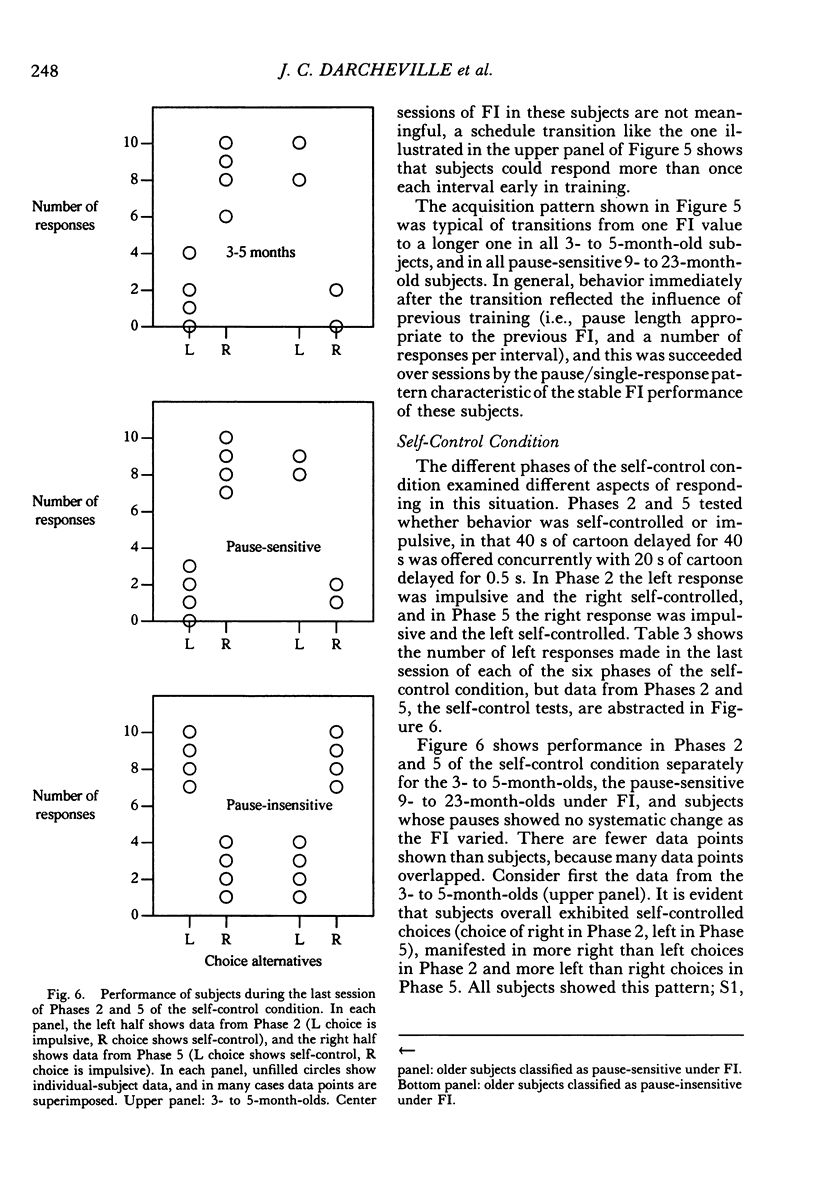

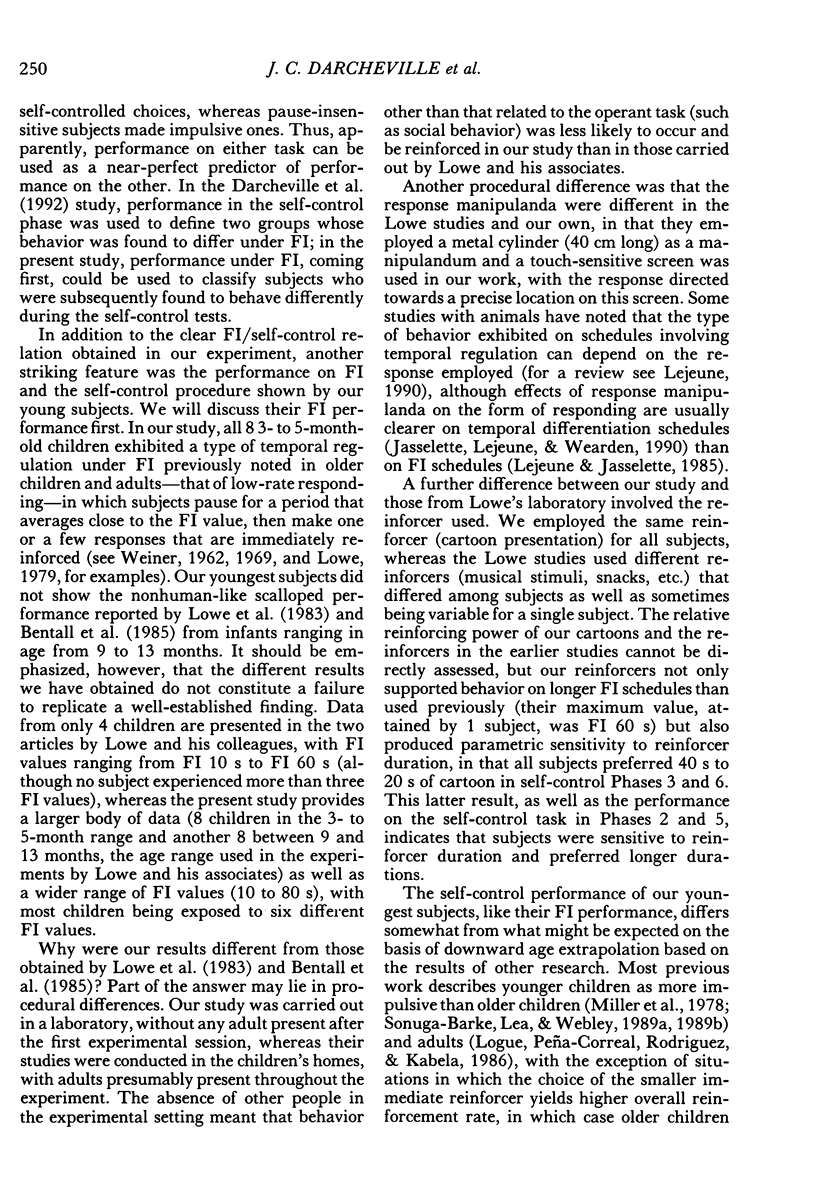
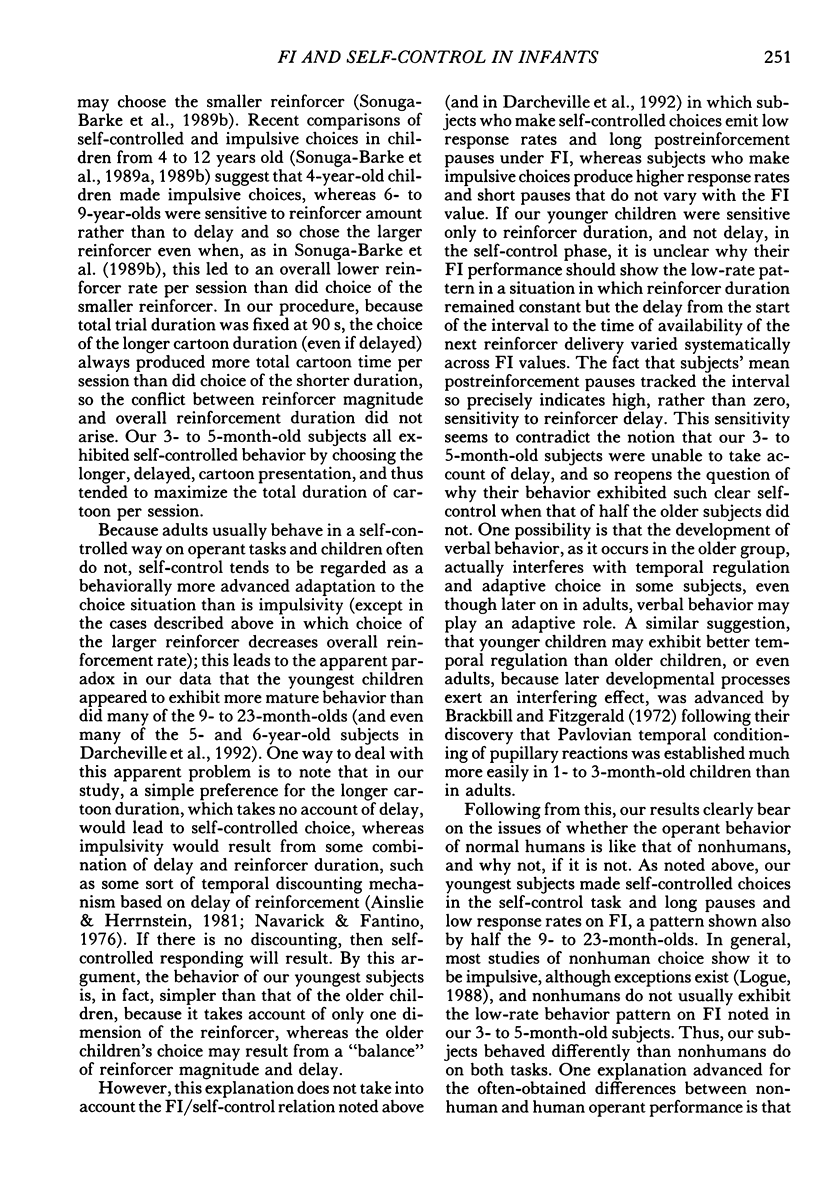
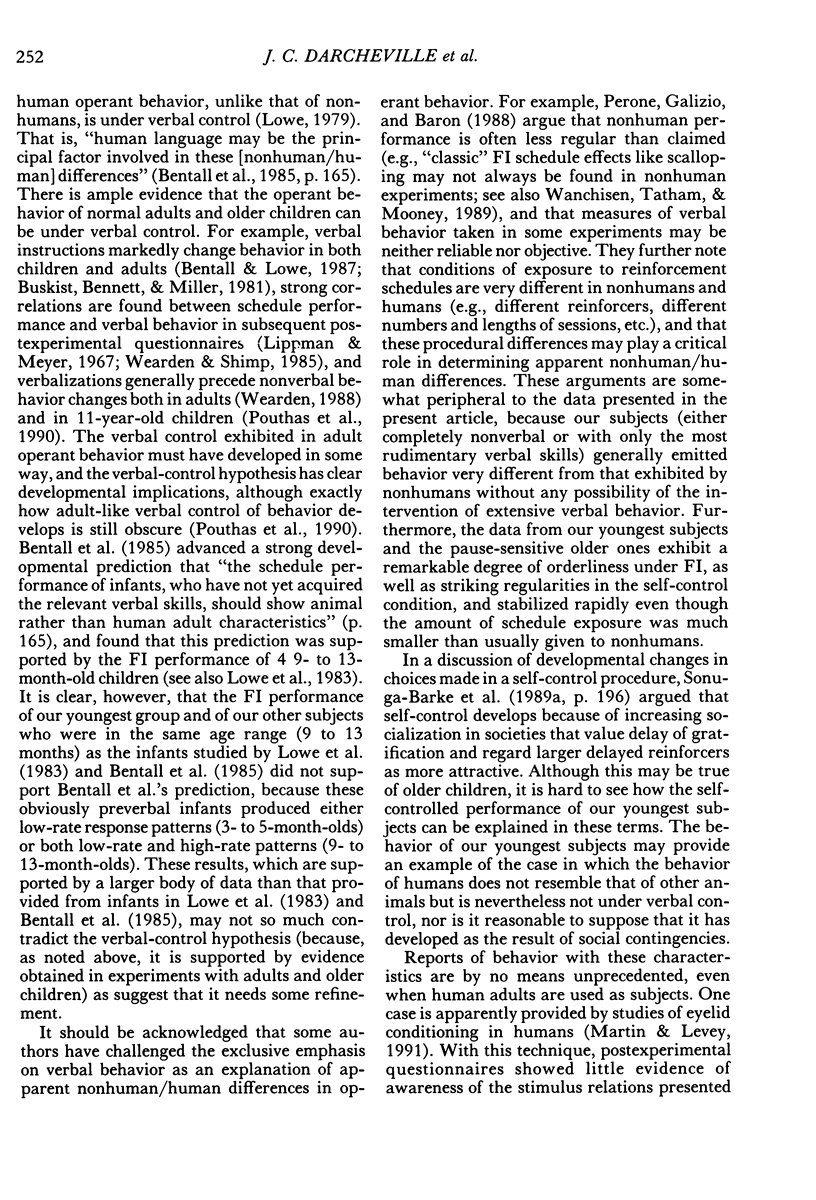
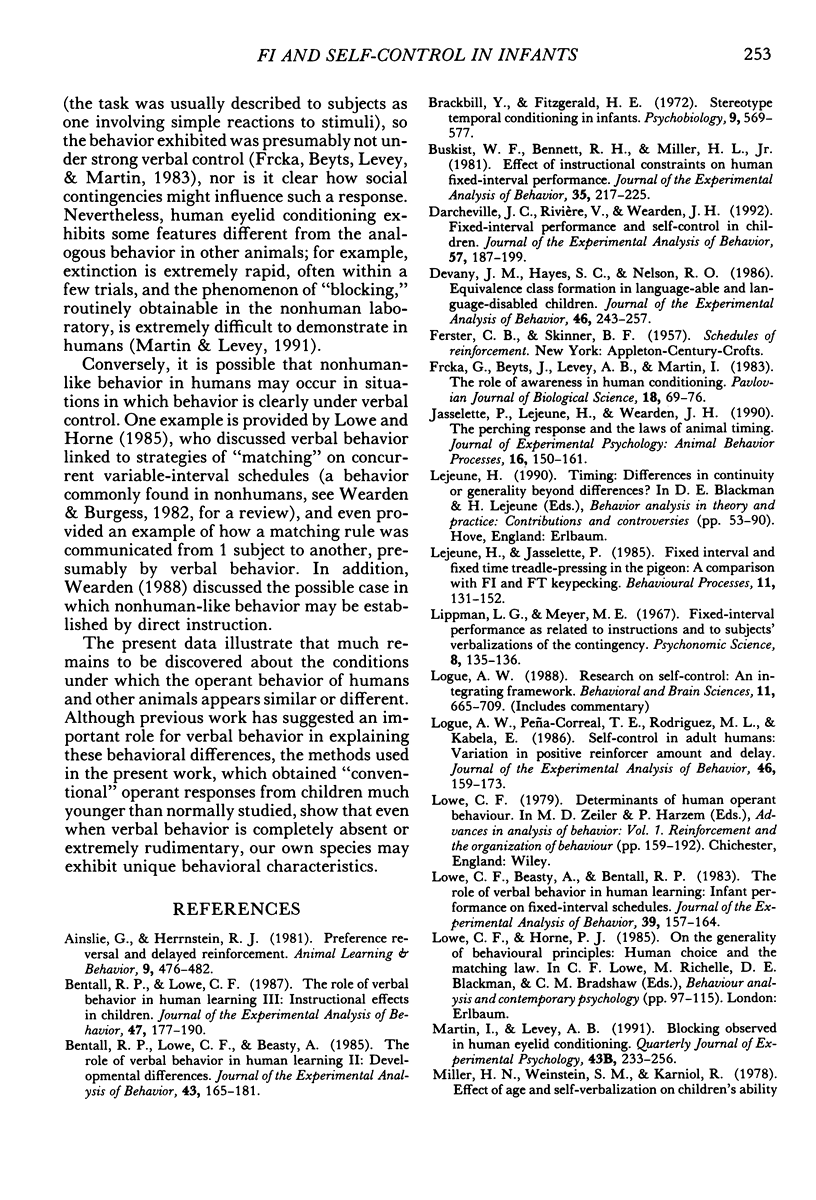
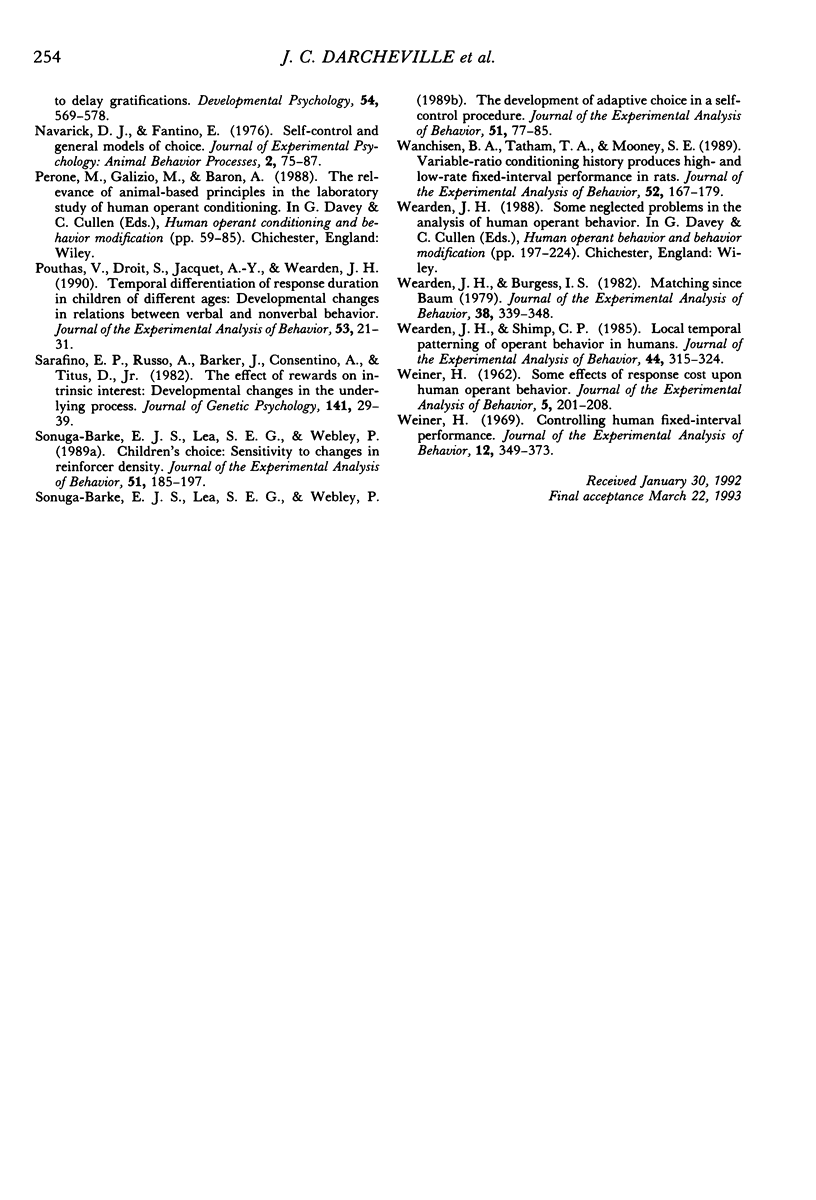
Selected References
These references are in PubMed. This may not be the complete list of references from this article.
- Bentall R. P., Lowe C. F., Beasty A. The role of verbal behavior in human learning: II. Developmental differences. J Exp Anal Behav. 1985 Mar;43(2):165–181. doi: 10.1901/jeab.1985.43-165. [DOI] [PMC free article] [PubMed] [Google Scholar]
- Bentall R. P., Lowe C. F. The role of verbal behavior in human learning: III. Instructional effects in children. J Exp Anal Behav. 1987 Mar;47(2):177–190. doi: 10.1901/jeab.1987.47-177. [DOI] [PMC free article] [PubMed] [Google Scholar]
- Brackbill Y., Fitzgerald H. E. Stereotype temporal conditioning in infants. Psychophysiology. 1972 Nov;9(6):569–577. doi: 10.1111/j.1469-8986.1972.tb00766.x. [DOI] [PubMed] [Google Scholar]
- Buskist W. F., Bennett R. H., Miller H. L. Effects of instructional constraints on human fixed-interval performance. J Exp Anal Behav. 1981 Mar;35(2):217–225. doi: 10.1901/jeab.1981.35-217. [DOI] [PMC free article] [PubMed] [Google Scholar]
- Darcheville J. C., Rivière V., Wearden J. H. Fixed-interval performance and self-control in children. J Exp Anal Behav. 1992 Mar;57(2):187–199. doi: 10.1901/jeab.1992.57-187. [DOI] [PMC free article] [PubMed] [Google Scholar]
- Devany J. M., Hayes S. C., Nelson R. O. Equivalence class formation in language-able and language-disabled children. J Exp Anal Behav. 1986 Nov;46(3):243–257. doi: 10.1901/jeab.1986.46-243. [DOI] [PMC free article] [PubMed] [Google Scholar]
- Frcka G., Beyts J., Levey A. B., Martin I. The role of awareness in human conditioning. Pavlov J Biol Sci. 1983 Apr-Jun;18(2):69–76. doi: 10.1007/BF03001857. [DOI] [PubMed] [Google Scholar]
- Logue A. W., Peña-Correal T. E., Rodriguez M. L., Kabela E. Self-control in adult humans: variation in positive reinforcer amount and delay. J Exp Anal Behav. 1986 Sep;46(2):159–173. doi: 10.1901/jeab.1986.46-159. [DOI] [PMC free article] [PubMed] [Google Scholar]
- Lowe C. F., Beasty A., Bentall R. P. The role of verbal behavior in human learning: infant performance on fixed-interval schedules. J Exp Anal Behav. 1983 Jan;39(1):157–164. doi: 10.1901/jeab.1983.39-157. [DOI] [PMC free article] [PubMed] [Google Scholar]
- Martin I., Levey A. B. Blocking observed in human eyelid conditioning. Q J Exp Psychol B. 1991 Aug;43(3):233–256. [PubMed] [Google Scholar]
- Pouthas V., Droit S., Jacquet A. Y., Wearden J. H. Temporal differentiation of response duration in children of different ages: developmental changes in relations between verbal and nonverbal behavior. J Exp Anal Behav. 1990 Jan;53(1):21–31. doi: 10.1901/jeab.1990.53-21. [DOI] [PMC free article] [PubMed] [Google Scholar]
- Sonuga-Barke E. J., Lea S. E., Webley P. Children's choice: Sensitivity to changes in reinforcer density. J Exp Anal Behav. 1989 Mar;51(2):185–197. doi: 10.1901/jeab.1989.51-185. [DOI] [PMC free article] [PubMed] [Google Scholar]
- Sonuga-Barke E. J., Lea S. E., Webley P. The development of adaptive choice in a self-control paradigm. J Exp Anal Behav. 1989 Jan;51(1):77–85. doi: 10.1901/jeab.1989.51-77. [DOI] [PMC free article] [PubMed] [Google Scholar]
- WEINER H. Some effects of response cost upon human operant behavior. J Exp Anal Behav. 1962 Apr;5:201–208. doi: 10.1901/jeab.1962.5-201. [DOI] [PMC free article] [PubMed] [Google Scholar]
- Wanchisen B. A., Tatham T. A., Mooney S. E. Variable-ratio conditioning history produces high- and low-rate fixed-interval performance in rats. J Exp Anal Behav. 1989 Sep;52(2):167–179. doi: 10.1901/jeab.1989.52-167. [DOI] [PMC free article] [PubMed] [Google Scholar]
- Wearden J. H., Burgess I. S. Matching since Baum (1979). J Exp Anal Behav. 1982 Nov;38(3):339–348. doi: 10.1901/jeab.1982.38-339. [DOI] [PMC free article] [PubMed] [Google Scholar]
- Wearden J. H., Shimp C. P. Local temporal pattering of operant behavior in humans. J Exp Anal Behav. 1985 Nov;44(3):315–324. doi: 10.1901/jeab.1985.44-315. [DOI] [PMC free article] [PubMed] [Google Scholar]
- Weiner H. Controlling human fixed-interval performance. J Exp Anal Behav. 1969 May;12(3):349–373. doi: 10.1901/jeab.1969.12-349. [DOI] [PMC free article] [PubMed] [Google Scholar]


